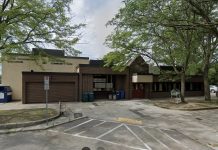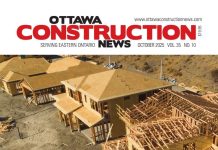Rare co-operation results in OMB granting additional consultation time on controversial rules
Ottawa Construction News staff writer
The Ottawa planning department’s rush to implement a new infill development bylaw for inner-city neighbourhoods has resulted in rare co-operation between the development community and community associations, concerned that the planned law will stifle innovation and create a cumbersome approval process with micro-regulation standards.
The proposed rules are so complex and novel that experienced planning consultants are having trouble understanding their implications. Developers, battling restrictions specifying parking, aesthetic design requirements and other details at the Ontario Municipal Board (OMB), indicate that the city planning department led by Alain Miguelez, the city’s program manager, zoning and intensification, is making things worse with the proposed bylaw.
The new infill development bylaw results from the development industry’s partial success in the first part of a two-level fight against the original infill bylaw, designed to restrict development in established urban neighbourhoods. The Greater Ottawa Home Builders’ Association (GOHBA) and 29 smaller developers have raised $150,000 to fight the matter at the Ontario Municipal Board, said Murray Chown, senior project planner at Novatech Engineering Consultants and a member of the GOHBA’s Builder Developer Council.
The city, responding to neighbourhood complaints, has been seeking to regulate garages and parking, streetscapes and other details, responding to complaints about developers jamming small houses with big front garages into established neighbourhoods. These infill developments are becoming increasingly prevalent with the municipal intensification policies, but the boundaries between reasonable planning control and excessive regulation have caused consternation and confusion among builders, who believe they are complying with the rules and municipal policy and believe the original infill zoning bylaw excessively regulates new in-fill development.
In their appeal to the OMB, the GOHBA and developers broke their argument into two separate issues, asking for separate decisions about whether the city had jurisdiction in law to pursue its new infill zoning bylaw, and, secondly, whether the new rules complied with municipal policy, that is, are they in compliance with key planning documents.
Chown says the OMB has yet to decide on whether the new bylaw complies with policy but earlier this year, an OMB decision threw some of the aspects of the bylaw’s jurisdiction into doubt. The OMB, in requesting changes to deal with the jurisdicition issues, originally gave the city five months to comply with its decision.
Chown said city planners rushed a “fix” to the bylaw to comply with the original OMB deadline, and the resulting proposed solution has satisfied no-one, including the community associations who have been on opposite sides of the issue with the building industry on the original infill bylaw.
He says the draft bylaw would require a new project to conform to three key design elements common to the plurality of 21 neighbouring houses – five on each side of the proposed development, the house on the opposite side of the street and five on each side of that house.
These houses are then evaluated by what the bylaw describes as “consistency groups” on the character of “front-yard patterns, parking patterns and entranceway patterns.”
“I’m having trouble understanding this bylaw, and I think virtually everyone else is,” said Chown. “I think the city may have created a situation where, if the bylaw is passed as outlined, without consultation, there may be many unwelcome unintended consequences.”
These views are shared by the Federation of Citizen’s Associations and the Hintonburg Community Association.
In a letter to the city’s planning committee on June 20 on joint letterhead, the three normally diverging associations shared their “concerns with the city’s proposed approach to amending the infill bylaw.”
“Residents, the development industry and community associations have been enthusiastic from the beginning of the process to create a progressive infill bylaw that achieves a balance of appropriate protection for neighbourhoodss andflexibilityy for innovative design,” says the letter, jointly signed by GOHBA executive director John Herbert and Jeff Leiper, president of the Hintonburg Community Association.
“We are concerned, however, that after early consultations, much of the by-law currently in dispute was developed essentially internally by planning staff in isolation. The proposed approach to meeting the requirements of the recent OMB decision has been entirely developed internally, and neither residents nor the development industry feel comfortable that they can speak to the potential implications of that approach by the time it is proposed to planning committee . . .”
Leiper said in an interview the joint intervention by the building industry and community groups achieved one objective – the OMB pushed back the deadline for the implementation bylaw “fix” until the end of the year. However, he indicated that there still is a long ways to go to effectively “fix the fix” and make the new bylaw effective and valid for both the communities and the building industry.
“In setting out a very mathematical formula for approving or not an infill or major renovation project, there are concerns that the city may be stepping in and over-regulating and not providing enough flexibility to allow for innovative and creative work to be done,” says Leiper.
He said the developers and community groups are also concerned that the “city seems to be out of touch with the vehicular behaviour of most mainstream Ottawans.”
The proposed bylaw requires the mathematical formula be applied for properties with the plurality of design and parking elements, that may not reflect the best direction for the community, or might set in stone old standards that are changing with new designs.
“I’m hoping we’ll see some compromise on some of these parameters by which they are designing character, to allow for innovation,” Leiper said. He said in some cases, a design quality that might reflect a quarter or third of the neighbourhood’s homes, might be forced on everyone else, because of the draft bylaw’s plurality rules.
Meanwhile, Chown says the development community is still awaiting the OMB’s decision on the overall policy behind the original bylaw. He said the fix resulting from the original OMB decision on jurisdiction needs to be made right – if only to protect the interests of builders and community groups if the second part of the OMB appeal fails to go the way the developers wish.
He said he has never seen a situation, however, where community associations and builders agree that the strategy proposed by the city planning department is wrong. Leiper says, from his perspective, that combining forces with the development community will help make the new bylaw more responsive and innovative, and he is looking forward to continuing consultations with the city and GOHBA.






